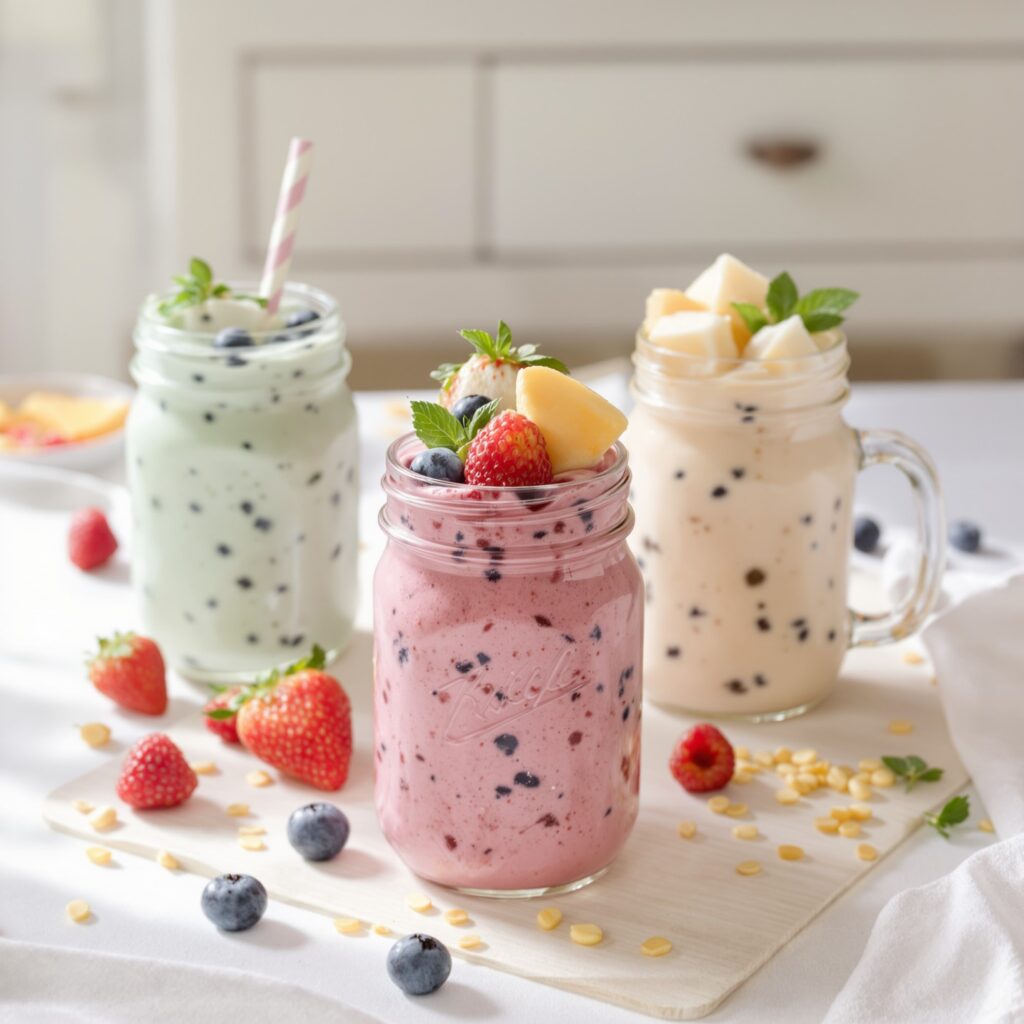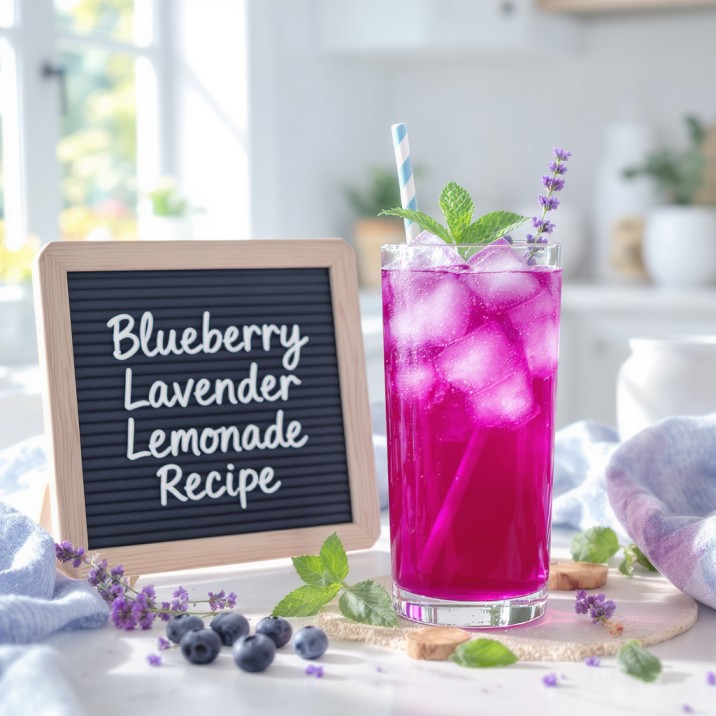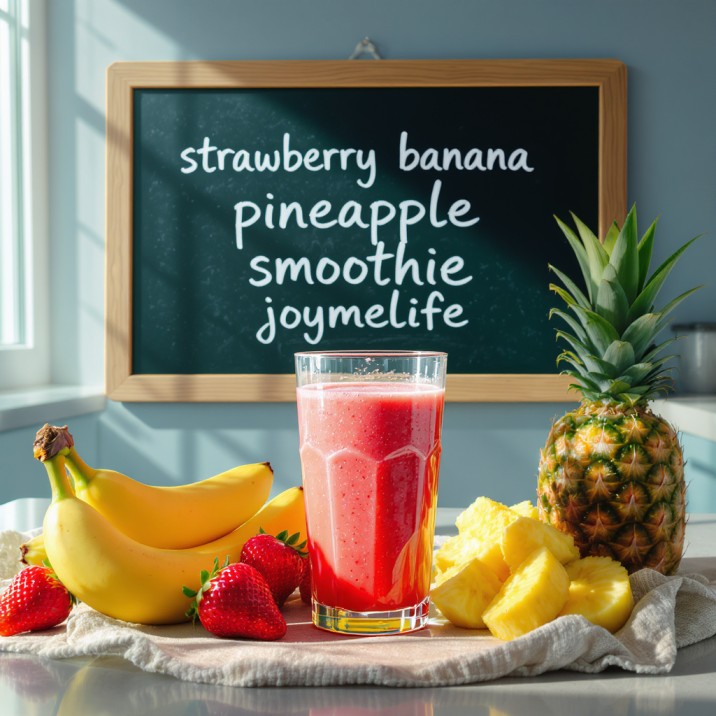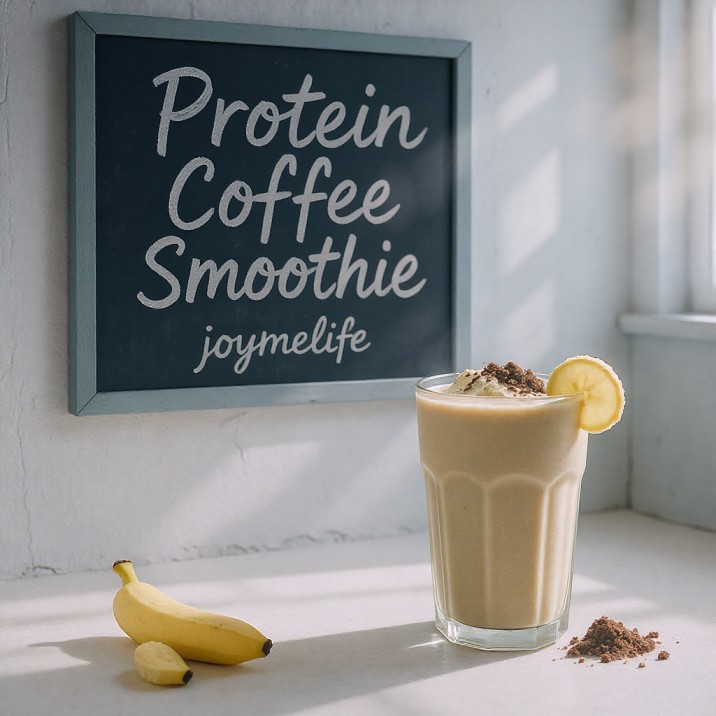Can You Freeze Smoothies? Your Ultimate Guide to Perfect Make-Ahead Blends

Welcome to joymelife! As we sail into the beautiful early days of June here in Romania and beyond, the desire for refreshing, healthy, and convenient food options is at an all-time high. Freezing smoothies can be a game-changer for your routine, saving you precious minutes, reducing food waste, and ensuring you always have a nutritious option. However, if you’ve ever tried it and ended up with an icy, separated, or bland concoction, you know there’s an art to it. This comprehensive guide is your masterclass in that art. We’ll delve into the science, the best methods, the right containers, and how to thaw your frozen creations for a taste and texture that’s (almost) as good as freshly made.

The Alluring Idea: Why We All Want to Freeze Our Smoothies
The appeal of freezing smoothies is undeniable:
- Time-Saving Champions: Imagine your morning rush, simplified. Grab a pre-made smoothie, let it thaw slightly, and you have a nutritious breakfast or snack ready to go.
- Meal Prep Masters: Make a big batch on the weekend and portion them out for the week ahead.
- Waste Warriors: Got leftover smoothie or fruits nearing their expiration? Blend and freeze!
- Seasonal Saviors: Preserve the peak flavor of seasonal fruits by blending them into smoothies and freezing them for enjoyment year-round.
The Big Answer & Our Promise: Yes, With the Right Know-How!
So, yes, you can absolutely freeze smoothies. But to ensure you’re met with a delightful drink rather than a disappointing slush upon thawing, understanding a few key principles is vital. This guide promises to equip you with that knowledge, turning you into a smoothie-freezing aficionado. We’ll cover:
- The Science: What actually happens when a smoothie hits sub-zero temperatures.
- The Gear: The best containers for the job.
- The Method: Step-by-step instructions for optimal freezing and thawing.
- The Ingredients: How different components react to the freezing process.
- The Fixes: Troubleshooting common frozen smoothie issues.
The Science of a Frozen Smoothie: What Really Happens in the Freezer?
When you freeze a smoothie, you’re essentially freezing a complex mixture of water, sugars, fibers, fats, and proteins.
The Chill Factor: Impact on Texture (Ice Crystals & Separation)
- Ice Crystal Formation: As the water content in your smoothie freezes, it forms ice crystals. The slower the freezing process and the more water present, the larger these crystals can become. Large ice crystals are what can lead to an “icy” or “gritty” texture upon thawing, rather than a smooth one.
- Separation: Smoothies are emulsions (mixtures of ingredients that don’t naturally stay mixed, like oil and water). During freezing and thawing, some separation of ingredients is very common, especially in smoothies with a high water content or those that contain ingredients like yogurt or certain plant milks. This is often why re-blending is recommended.
Nutrient Watch: Does Freezing Diminish Vitamins?
This is a common concern, and the good news is that freezing is actually one of the best methods of food preservation for retaining nutrients.
- Minimal Loss: While some very sensitive vitamins (like Vitamin C) might see a slight decrease over long storage periods, the overall nutrient loss is generally minimal, especially compared to other preservation methods.
- Protection: The freezing process can actually protect many antioxidants and phytonutrients from degradation that might occur at room temperature or in the fridge.
Flavor Fortitude: Will Your Smoothie Still Taste Amazing?
For the most part, yes!
- Flavor Preservation: Freezing generally does a good job of preserving the core flavors of your smoothie ingredients.
- Subtle Changes: You might notice very subtle changes in flavor intensity or profile after thawing, but usually, it’s negligible. Some intensely sweet flavors might even seem slightly muted when very cold.
Your Freezing Toolkit: Best Containers & Essential Supplies
Choosing the right container is crucial for successful smoothie freezing.
Glass Jars (Mason Jars): Pros, Cons, and the Headspace Hero
- Pros: Reusable, eco-friendly, non-reactive (won’t impart flavors), easy to see contents.
- Cons: Breakable, heavier, and you MUST leave adequate headspace (at least 1-2 inches) because liquids expand when they freeze. Failure to do so can result in cracked or shattered glass. Opt for wide-mouth jars for easier filling and removal.
Freezer-Safe Plastic Containers:
- Pros: Lightweight, durable, often stackable, less risk of breakage.
- Cons: Can sometimes absorb odors or stains over time; ensure they are BPA-free and specifically marked as freezer-safe. Still requires headspace.
Silicone Molds (Ice Cube Trays, Muffin Molds): For Smoothie “Pucks”
- Pros: Excellent for portion control. Frozen smoothie “pucks” or cubes can be easily added to a blender with a little liquid for a super-quick fresh smoothie or used to chill other drinks. Easy to pop out.
- Cons: Requires an extra step of transferring the frozen pucks to a larger freezer bag or container for long-term storage.
Reusable Smoothie Pouches:
- Pros: Great for kids, portable, good for portion control.
- Cons: Can be harder to clean thoroughly; ensure they are made from durable, freezer-safe material.
Beyond Containers: Labels, Markers, and Other Handy Tools
- Permanent Markers & Freezer Labels/Tape: Essential for labeling contents and, most importantly, the date of freezing.
- Funnel: Can make pouring smoothies into jars or pouches much neater.
The Art of Freezing: A Step-by-Step Masterclass in Smoothie Preservation
Follow these steps for the best results.
Step 1: Crafting a “Freezer-Friendly” Smoothie Base
- Texture is Key: Smoothies that are slightly thicker to begin with often freeze and thaw better. Ingredients like banana, avocado, chia seeds, flax seeds, or oats can help create a good base texture.
- Flavor Concentration: Consider making your smoothie flavors slightly more robust, as extreme cold can sometimes dull perception of sweetness or flavor.
Step 2: Cool It Down (If Necessary)
If any of your smoothie ingredients were warm (e.g., freshly brewed coffee used in a coffee smoothie, though ideally it should be chilled first), or if your blender generated significant heat, let the smoothie cool to room temperature or chill in the fridge for a bit before freezing. Freezing warm items can raise the temperature of your freezer and affect other frozen goods.
Step 3: Portion Control & Choosing Your Container
Decide on your desired serving sizes and select the appropriate containers. Single-serving portions are generally most convenient.
Step 4: The Crucial Headspace Rule (Preventing Explosions!)
This cannot be stressed enough, especially for glass jars. Liquids expand when they freeze.
- For Jars/Containers: Leave at least 1 inch of empty space at the top (more for narrower jars, like 1.5-2 inches).
- For Pouches: Don’t overfill; leave some room for expansion.
- For Silicone Molds: Fill to just below the rim.
Step 5: Seal, Label, Date, and Freeze Like a Pro
- Seal Tightly: Ensure your containers are well-sealed to prevent freezer burn and absorption of freezer odors.
- Label Clearly: Write the type of smoothie and the date it was frozen. You think you’ll remember, but a few weeks later, all frozen green things look alike!
- Freeze Promptly: Place your filled and labeled containers in the freezer as soon as possible.
The Thawing Blueprint: Reviving Your Frozen Smoothie for Optimal Enjoyment
Proper thawing is just as important as proper freezing.
The Gold Standard: Refrigerator Thawing (Slow & Steady)
- Method: Transfer the frozen smoothie container from the freezer to the refrigerator.
- Time: This can take anywhere from 8-24 hours, depending on the size of the smoothie and your fridge temperature.
- Benefit: Slowest, safest thawing method that keeps the smoothie at a safe temperature and often results in a better texture.
The Countertop Thaw: Quicker, But With Cautions
- Method: Leave the frozen smoothie container on the counter at room temperature.
- Time: Typically 2-4 hours, depending on size and room temperature.
- Caution: Do not leave dairy-based or other perishable smoothies out at room temperature for too long (more than 2 hours generally, less in warm weather) due to food safety concerns. This method is better for smaller portions or quicker consumption.
Quick Thaw Methods (When You’re in a Rush)
- Cold Water Bath: Place the sealed container in a bowl of cold (not warm or hot) water. Change the water every 30 minutes. This can significantly speed up thawing.
- Avoid the Microwave: Microwaving a frozen smoothie is generally not recommended. It thaws unevenly, can cook parts of the smoothie, destroy nutrients, and potentially melt or damage your container.
The Re-Blend Ritual: Often the Key to Restored Perfection
This is the magic step for most thawed smoothies!
- Why Re-Blend? Separation is common. Re-blending, even for just 15-30 seconds, re-emulsifies the ingredients, breaks up any remaining ice crystals, and restores a smoother, creamier texture very close to a freshly made smoothie.
- How to Re-Blend: Pour the mostly thawed smoothie into your blender. If it’s very thick, you might need to add a tiny splash of liquid (milk, water) to help it blend. Blend briefly until smooth.
Ingredient Deep Dive: How Common Smoothie Components Handle the Freeze
Beyond the Glass: Creative Uses for Frozen Smoothie Portions
Don’t just think of drinking them!
- Instant Smoothie Bowls: Blend frozen smoothie “pucks” or cubes with a minimal amount of liquid for an extra-thick smoothie bowl base.
- Healthy Popsicles: Pour your smoothie mixture directly into popsicle molds before freezing for a refreshing treat.
- Flavor Boost for New Smoothies: Add a few frozen smoothie cubes of a complementary flavor to a fresh smoothie instead of plain ice.
- Quick Sorbet-Like Treat: Partially thaw and eat with a spoon for a simple, healthy dessert.
Freezer Smoothie Packs vs. Freezing Blended Smoothies: What’s the Difference?
It’s important to distinguish:
- Freezing Blended Smoothies (this guide’s focus): You make the complete smoothie, then freeze it. Great for grab-and-thaw convenience.
- Freezer Smoothie Packs: You combine all the solid, unblended ingredients (chopped fruit, greens, seeds, powders) into freezer bags. When ready to make a smoothie, you dump a pack into the blender, add your liquid, and blend fresh. This method often yields a texture closer to a brand-new smoothie but requires blending each time. Both are excellent meal prep strategies!
Frozen Smoothie Fails & Fixes: Your Troubleshooting Guide
| Smoothie Fail | Probable Cause(s) | The Fix(es) |
|---|---|---|
| Too Icy After Thawing/Re-blending | Too much water-based liquid; not enough creamy elements (banana, avocado, yogurt, nut butter); froze too slowly. | Add a creamy element (e.g., ½ banana, tbsp nut butter) when re-blending. Ensure a good ratio of solids to liquids in the initial blend. |
| Separated Badly & Won’t Recombine | High water content; certain ingredients prone to separation. | Always re-blend thoroughly. A vigorous shake might suffice for minor separation if you can’t re-blend. |
| Tastes “Freezer-Burnt” or “Off” | Improper sealing; stored too long; absorbed freezer odors. | Use airtight containers. Double-bag if needed. Don’t store for excessive periods (aim for 1-3 months for best quality). Ensure freezer isn’t overly smelly. |
| Container Cracked in Freezer | Not enough headspace left for liquid expansion. | Always leave at least 1-2 inches of headspace in glass jars. Don’t overfill plastic containers or pouches. |

All Your Smoothie Freezing Questions Answered (Expanded FAQ)
Can I freeze homemade smoothies?

Absolutely! Freezing homemade smoothies is like giving your future self a delicious, high-five – a vibrant, nutrient-packed treat perfectly preserved and waiting for you. It’s your secret weapon for conquering busy mornings, making healthy choices effortless, and ensuring no precious fruit goes to waste.
Can you freeze a smoothie and then defrost it?
Indeed, you can! Think of freezing as hitting the “pause” button on your smoothie’s fresh, blended life. When you’re ready to enjoy it, defrosting is like pressing “play.” The real magic to restoring that just-made creamy glory often comes with a quick re-blend after it has thawed – that’s the key to bringing it back to life beautifully.
Does freezing smoothies lose nutrients?
That’s a fantastic question! While a tiny fraction of some very delicate vitamins might diminish over many months in the freezer, freezing is actually an excellent way to preserve the vast majority of nutrients in your smoothie. It’s much better than letting ingredients degrade in the fridge for days. Consider it a nutritional time capsule, locking in the goodness of your vibrant ingredients until you’re ready for them.
Can you freeze smoothies with milk and yogurt?
You certainly can! Milk (both dairy and plant-based) and yogurt are quite content to be frozen as part of your smoothie. The main thing to expect is that they might cause some separation in texture as the smoothie thaws – it might look a bit different than when you first blended it. But don’t worry! After defrosting, a quick spin in the blender almost always brings everything back together into a creamy, dreamy consistency.
Does freezing smoothies work?
It absolutely works, and remarkably well, especially if your goal is convenience, reducing food waste, and having a healthy, delicious option ready in a flash! “Working” means that with proper freezing, thawing, and often a quick re-blend, you get a highly enjoyable, nutrient-rich drink. While it might not be 100% identical to a smoothie blended just seconds before, it’s incredibly close and a wonderfully practical solution for a busy life.
Conclusion: Embrace the Freeze for Effortless, Healthy Smoothies
So, can you freeze smoothies? Not only can you, but with the right approach, it can become an invaluable tool in your quest for convenient, healthy eating. By understanding how different ingredients react, choosing the right containers, and mastering the art of thawing and re-blending, you can unlock a world of make-ahead smoothie possibilities. Say goodbye to the morning rush stress and hello to perfectly preserved, ready-to-enjoy nutritional powerhouses.
Freezing smoothies allows you to capture the peak of seasonal produce, minimize food waste, and ensure that a vibrant, delicious, and healthy option is always within reach. It’s time to make your freezer your smoothie-loving best friend!





